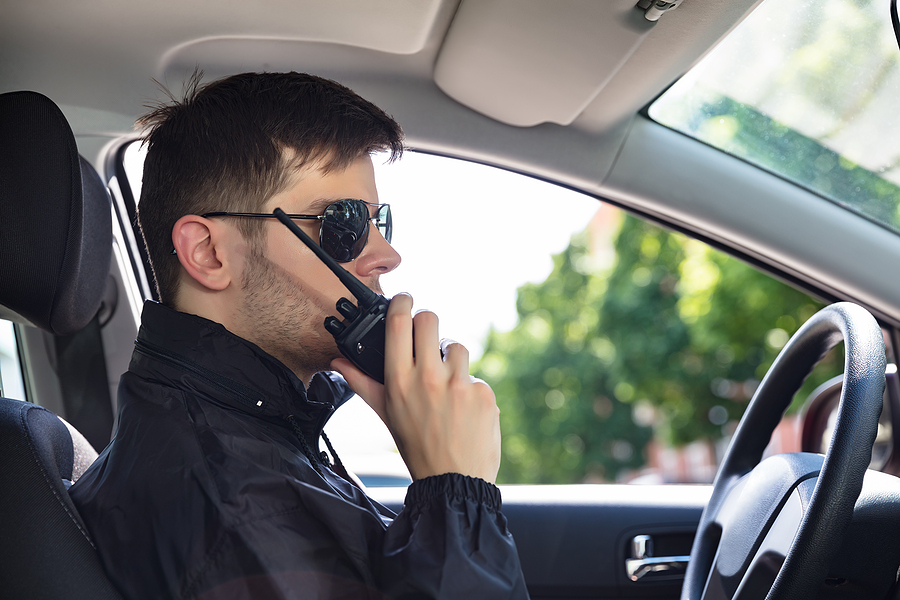
When my wife and I were a young married couple, we moved to three different states in the first five years of our marriage. For each move we would have a two-vehicle convoy of either our cars or a car and a moving truck towing a car. In order to communicate, we always had CB radios (citizens band radio service) in each vehicle. This was long before the days where everyone had a mobile phone.
In addition to keeping us in contact with each other, we also knew what was going on with the highway ahead of us as truckers were always on their radios. The professional drivers would advise others in regards to crashes, construction, and speed traps manned by “smokies.” Yes, it was a better time in America.
Radio Communications 101
Recently I participated in an Introduction to Radios or Radio Communications 101 course held at The Freedom Hall & Academy in Vernal, Utah. I’ve been using portable radios in some form or fashion my entire adult life in the Marine Corps as a police officer as well as during my time working as a professional bodyguard. I have been a radio user for not quite forty years now, but I have never been a radio programmer. I knew that one of the instructors for this class was a serious radio geek and was well-versed in not only how to use radios but how to program them as well. I was most interested in that part of the equation.
During the beginning of the course we discussed the pros and cons of handheld/portable radios. After all, almost everyone living on planet earth now has a tracking device — a mobile phone — attached to their bodies.
PROS: Direct and deliberate communication – portable radios are active versus passive communication tools. Relatively low cost – per unit cost is a fraction of the price of a mobile phone and there are no monthly service fees for handheld radios. Immediate communication with multiple persons – with the push of a button you can transmit a message to everyone tuned into your channel/frequency. Radios are autonomous and not subject to external outages when “the network goes down.” Regarding privacy, when a radio is turned off, it doesn’t continue to “ping” like your mobile phone does. You can remove the battery from your handheld radio and it can’t be tracked.
CONS: Radios are limited to line of sight from unit to unit or from unit to repeater tower to unit. Radio transmissions, minus expensive and intricate encryption gear, are open air traffic and anyone tuned to or scanning that frequency can hear you. While anyone can listen to radio traffic, if you want to broadcast and communicate on certain FCC regulated frequencies, a license is required. There are different license requirements for different radio services and power levels. Everyone you want to talk to will need a radio that transmits and receives on the same channel/frequency that you desire to use. Like your mobile phone, handheld radios rely on battery power. Lightweight, compact battery packs are convenient, but they don’t last that long. Longer lasting batteries are heavier and take up more space.
Picking Your Service
One of the radio communication basics is the understanding that the FCC had designated certain frequencies on the wide radio spectrum to designated users to match their needs. These are broken down into the various radio services.
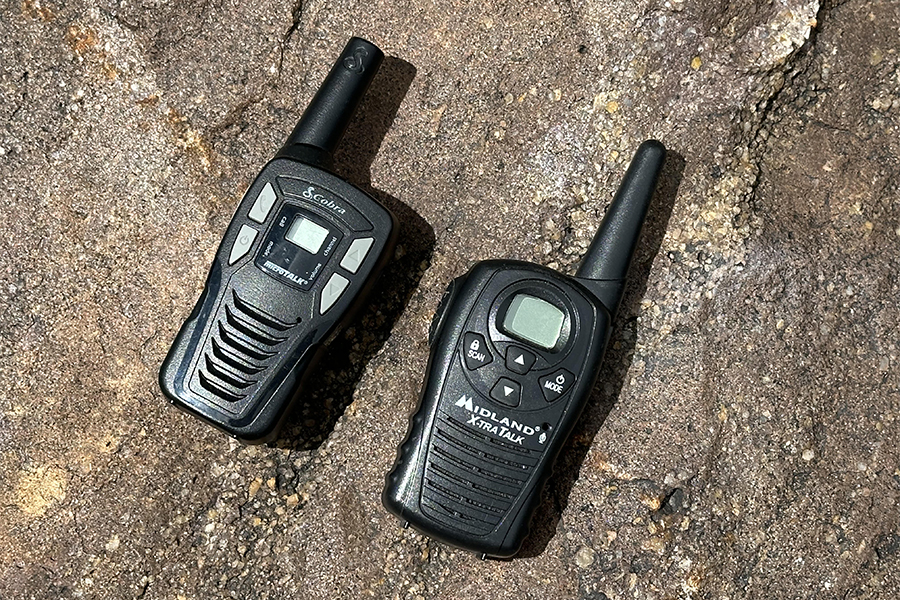
The FRS or Family Radio Service is the most common one used by non-military or non-government personnel. All of the little handheld radios with stubby antennas that are sold at your local big box or sporting goods store are pre-programmed for FRS Channels 1 to 22. There’re low wattage units that are good for maybe one to two miles of clear line of sight. The FRS radios are good for camping or other outdoor activities where people will be spread out. They’re also good for small teams to keep in communication with each other.
Because the FRS is low-powered, there is no licensing required to use them. These basic radio units don’t need to be programmed and the majority of the ones from the sporting goods store can’t be reprogrammed.
The CBRS or Citizens Band Radio Service spectrum is broken up into 40 channels with CB frequencies ranging from 26.965 to 27.405 MHz. No license is required to purchase or use CB radios. While we primarily think of CB radios as units hardwired into a vehicle, there are indeed handheld CB radio units. Portable CB radios tend to be much larger and heavier than the very compact and lightweight FRS portables.
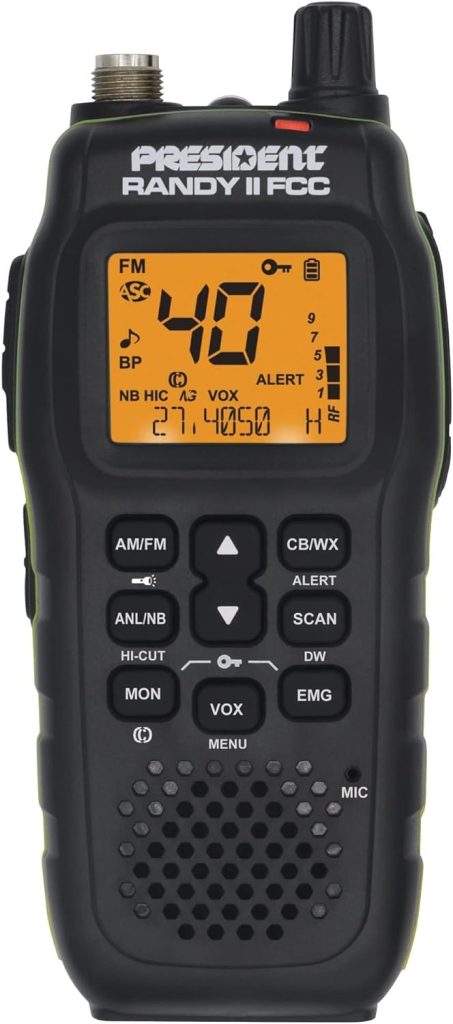
GMRS or General Mobile Radio Service includes frequencies set aside by the FCC, but these units are more powerful than the FRS or CB radios. GMRS is a licensed radio service that uses channels around 462 MHz and 467 MHz. Your GMRS radio units will be programmable and have numerous features, such as larger, more powerful batteries, longer range antennas, handheld microphones, etc.
Like the FRS, the GMRS has 22 designated channels and some of those overlap with the FRS. Although there’s a license needed to operate GMRS radios, it’s the least expensive and easiest to obtain. For $35 you can get a 10-year license that covers you and all of the members of your immediate family as well.
Walking the Walk and Talking the Talk
One of the focus points of the class I took in Vernal was to get the students used to properly using portable radio units. We went over the basic features of handheld radios. On the super basic units you’ll have an on/off button or knob, volume controls (buttons or knob), channel selection buttons, normally with up/down arrows, and your push-to-talk button or PTT.
Some radios have a VOX or voice-activated transmission option. While that might be good for some limited uses, as a general purpose setting, VOX is a nightmare. VOX is a battery killer as it’s always trying to transmit nearly any noise that the microphone picks up. Also, VOX is always listening. Everything you say, even if you don’t intend to transmit it, will go out over the airwaves.
Basic radio etiquette includes pre-planning what your message. Before you key the microphone, pre-plan what you are going to say in your head. Brevity is also important. When you are pre-planning what you are going to say, keep it short and concise. You need to eliminate the “u,ms” and “aahs.”
When you push the transmit button, count “one thousand one” in your head before you speak so the radio has time to key up for transmission. Speak slowly and clearly. This is a good time to practice your enunciation skills. Brevity codes exist for a reason. The universal 10 codes were developed for just such a purpose. “10-4” means I heard your message and I understand. “10-20” is a request for your location, etc.
Remember, the airwaves are shared by everyone. A handheld radio isn’t a phone. If you need to have a long, detailed conversation, use a telephone, not a radio.
Baofeng UV-5R: the Guerilla Radio
Love them or hate them, the Baofeng UV-5R is the universal guerilla or pirate radio. Tens of thousands, maybe even hundreds of thousands, have been sold internationally. These radio transceivers are programmable, have numerous options available, and the basic units are crazy cheap. Chances are high that innumerable readers of this article already have a set of Baofengs that they bought “just in case” but have never even taken out of the package.

The UV-5R comes pre-programmed with the 22 FRS channels or you can program your own dedicated frequencies into it using the CHIRP software. During the class I discovered that CHIRP is the go-to for radio geeks everywhere. You can manually program your radios, but the guys who know what they’re doing never waste their time with such endeavors.
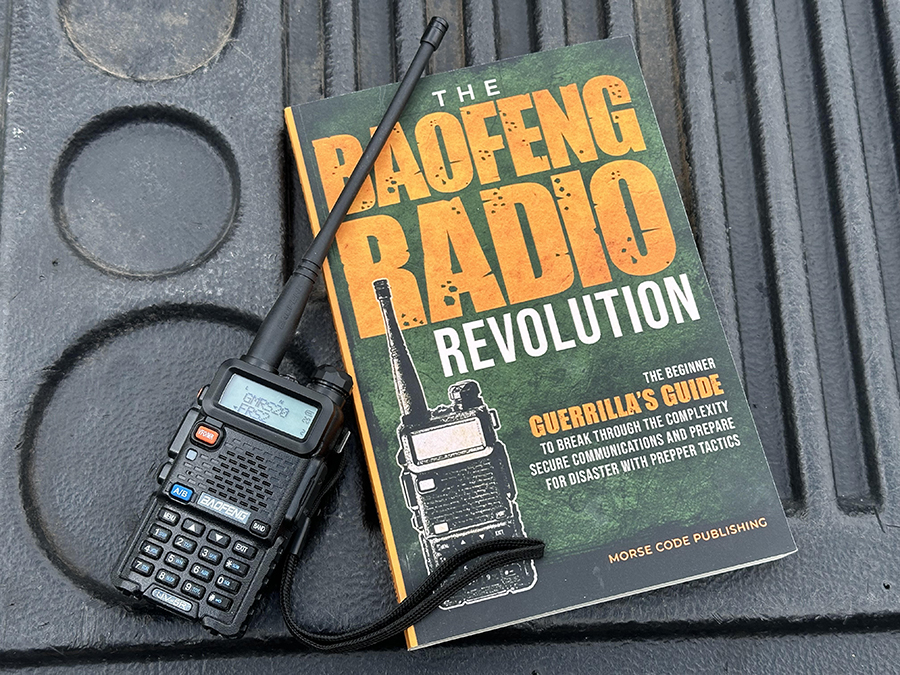
If you like to learn by reading, I recommend the book “The Baofeng Radio Revolution.” I bought it and started reading it before I took the class and the book knowledge and the class knowledge blended well.
PROS: The Baofeng UV-5R is very inexpensive and most often sold in pairs. Anyone with a job can afford them and has no excuse to be without them. Because they’re so inexpensive you can loan them to friends and neighbors without having to worry about them getting broken. If you friend loses or breaks one, you are only out $30 or so, not $200.
The UV-5R radios can be quickly tuned to FM in order to monitor emergency radio traffic during a crisis. You can also listen to the NOAA (National Oceanic and Atmospheric Administration) channel for severe weather reports and updates. You can go to weather.gov to find the frequency for NOAA that serves your area. Look up that frequency before the power and internet goes out.

CONS: One of my radio operator friends likes to say that, “If a UVR sees a rain drop it stops working.” That might be a bit of hyperbole, but be aware that these little radios have zero water-resistance. If you drop one in a lake or river, it’s toast. If you are using the UV-5R in the field, you need to purchase a waterproof bag or container to keep it from getting ruined. The standard, slim battery that comes with the Baofeng radios had a rather limited power-charge. Buy spares or a larger battery. Also, the fact that these little radios have a keypad and multiple buttons can be rather off-putting to end users. Many view them as “too complicated” and never learn to use them properly.
Parting Thoughts
There is a lot more that could be said about portable radios, but this should be enough to get you moving in the right direction. The bottom line is this: before you spend one more dollar on a part or accessory for a gun, you need to buy radios. A team without radios is just a bunch of guys running on their own. I’ve used Motorola, Midland, and Yaesu radios as well as the Baofengs. Shop based upon your budget.
Whether you’re preparing for a family outing, severe weather emergencies, a temporary man-made crisis, or a grid down sh!tstorm, you will need to be able to communicate with your friends and family as well as the outside world. You don’t need to buy another gun, you need to buy radios and learn how to use them.
Paul G. Markel is a combat decorated United States Marine veteran. He is also the founder of Student the Gun University and has been teaching Small Arms & Tactics to military personnel, police officers, and citizens for over three decades.

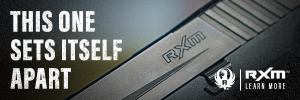
Get an amateur radio (HAM) license. You will learn more about long range radio communication, and have far more capabilities than anything offered by the radio services this article has mentioned.
Congratulations on your ’round the world journey to miss the point.
If point is to prepare yourself for for a situation where radio communication becomes an absolute necessity, then I am spot on.
However, the point is to severely hinder yourself in such a situations, by using radios/services with extremely limited range and capabilities…then yes. I guess I missed it.
Hate to tell you this , Paul, but JimB happens to be correct.
Those cheap little UHF/VHF radios are limited to FM only and have very low output power, therefore they have extremely limited rage…maybe 4 or 5 miles tops. UHF/VHF. CB Radio is limited to AM and also low power, and as anyone who has ever listen to AM in the car knows, everything causes interference with AM signals, and the range is limited even for 1,000+ watt commercial AM stations.
UHF/VHF Ham radios also have FM, but they also offer SSB capability, giving them a range of 400+ miles in the UHF/VHF spectrum. HF Ham radios have a global range…literally 10,000+ miles in voice, digital and weak signal modes. Hell, we can even send emails from one radio to another.
In a SHTF or disaster situation Ham radio is is superior to all…period
“UHF/VHF Ham radios also have FM, but they also offer SSB capability,…”
Is that something new? The majority of the handheld and under-dash mobile 2m-440 radios by the major manufactures are pretty much FM or digital mode only, you don’t get SSB on those frequencies unless you pony-up (like I did) for a high-end rig like my beloved ICOM IC-705 QRP rig, or Yaesu’s new recently-announced replacement for their long-in-the-tooth (but still good) FT-817-slash-FT-818 QRP rig.
Where are all these radios you speak of? Few folks are willing to drop the $1,400 like I did on my IC-705 for a piece gear not used often.
A 30-dollar Baofeng, hell yeah, well over a grand, not so much.
EDIT – Check out the $35 Quasheng UV-K6, a no-shit SDR 2m-440 handheld that can take a firmware update making it able to receive a good chunk of the higher HF bands, including SSB :
https://www.youtube.com/watch?v=zzzakGSQ24E
Nope…not a new thing at all.
But hey, if you want to trust a cheap chiese HT in a real emergency, more power to ya.
“But hey, if you want to trust a cheap chiese HT in a real emergency, more power to ya.”
The major reputable manufacturers make entry-level monoband VHF/UHF handhelds in the 100 dollar range, there is nothing cheap about their quality…
“Baofeng UV-5R for emergencies”
Count me as one of those who bought a few, plus extra batteries and a case to protect them. I got mine just before the FCC bandwidth change went into effect, so they’re more capable than current versions. I have the common FRC radios like every Average Joe, plus UV-5Rs for SHTF. There’s always a legitimate argument for advocating higher quality equipment, but let’s remember that this article is about common modes such as CB, FRC, etc.
I had a few of those Baofeng’s for use around the property. They worked out OK for those short ranges, but these claims of 2 miles or more some how being reliable is more dubious than reliable.
In a localized emergency situation why would I want to talk to someone half way across the world? I’m more apt to need to talk to the guy down the street or the next house over. Or possibly in the car behind me in a caravan situation. Bigger isn’t always better, or necessary.
The YouTube channel “Not A Rubicon” ridicules “sad hams”, whom he calls “some people” and other pejoratives. He’s hilarious, but “some people” (he uses air quotes) don’t have a sense of humor and do miss the point.
I have two way portables, and a shortwave/longwave receiver I keep in a Faraday Box. A separate Faraday has batteries and solar chargers.
A EMP is going to knock out a lot of electronics. The severity will be determined by what the Sun sends our way. I figure the Military will be the first communications that will broadcast as they have EMP hardened sites. I don’t believe many civilian broadcasting facilities are EMP hardened.
I am considering getting a PRC 77 and a battery adapter. A field expedient antenna is easy enough to make to increase range.
If you make a Faraday Cage, make sure it is electrically isolated from any common grounds. It should have its own isolated ground, something I see missing on many sites about them.
Or my company can build you a full size Faraday with a door, window and power filters. Only about 250k. I have never been given an answer whether the gov is informed if we install for a civilian.
“I have two way portables, and a shortwave/longwave receiver I keep in a Faraday Box.”
Longwave is for the most part, besides a few navigational beacons, dead and gone in North America…
If I ever *need* a Faraday box, I don’t have long to live, anyways…
*Shudder*
FormerParatrooper,
There are two different kinds of “EMP” events to consider which present different problems.
The first kind of EMP event is human created (most typical would be from a nuclear blast). These events will damage many electronic devices unless they are in a Faraday cage. Electronic devices which a skilled and knowledgeable person “hardened” should also be undamaged.
The second kind of EMP event is a massive solar flare. These events will damage many electrical devices (e.g. a simple fan) as well as electronic devices if they are attached to long wires of hundreds or more likely thousands of feet long. Electrical and electronic devices which are disconnected from long wires should be fine without any “hardening”. Note that it may not be practical to “harden” devices since a solar flare could create very high voltages on long wires for several hours and “hardening” usually entails shunting excess energy away from devices for a few seconds. Shunting excess energy for several hours would likely “burn out” the hardening components.
Most civilian broadcasting facilities are NOT hardened for EMP events. I imagine that the only possible civilian broadcasting sites which are hardened would be the top-tier transmitters in the Emergency Alert System. And I can easily picture that even those are not be hardened.
I’ve have a lot of experience with cheap Baofeng radios with our CERT Team over the years. If you live in an area with lots of building and hills FRS and GMRS are both questionable options. FRS especially can have a lot of local family and kid traffic. We’ve had better success with MURS but be sure to get an antenna designated for MURS. We use the 15 inch TIDRADIO-771. The biggest issue with MURS is some businesses (Wal Mart and Target) use MURS, but since there is 5 available channels, 3 are available in town and all 5 out of town. As for the need of a license if, SHTF the government will be too busy to worry about it. Also while technically not legal to communicate on a Ham frequency without a license it is okay to listen and in an emergency situation using Ham without a license is better than letting someone die.
My only real concern is the Sun is due for another Carrington event. Would only put us back 150 years. I would think you could survive that.
That radio has several bands, I pull it out on some clear nights to see what I can hear. I have heard some traffic on LW, but it is rare.
North Africa and Europe are the only nations broadcasting on longwave these days, and they are blowtorches of like over 500,000 watts. Yet nary a whisper on any of my longwave-equipped radios…
A better alternative; Amateur Radio. You have to take a class and take a test to get a license, but there are LOTS broader bands available. Visit
https://www.arrl.org/getting-licensed to learn more about it. If you have a CB radio AND an amateur (or, “HAM”) radio, you’ll have more options.
1. You did not mention amateur radio, a far better option than any of those named. A technician class license to operate a hanheld (generally 5 watts) is easy to obtain. Our club has a license-in-a-day class and exam.
2. Baofengs will operate on the ham bands as well and are a very common starter radio for hams. Even most veteran hams have several Baofengs lying around.
3. A better radio than Baofeng is Tidradio TD-H8, almost as cheap as Baofeng and double the output power. They are sold in two varieties: ham and GMRS, although they are actually the same radio that can be switched between the two services.
Lee
KV5M
The most important point about a handheld ham radio is that it has a much higher output than the FRS/GMRS radios and thus a much greater range. A Technician license is not too difficult to get. And a mobile radio in your car will range further yet; they are commonly 50 watts.
I have tested the small and inexpensive Family Radio Service handheld two-way radios with transmit power around 1/4 Watt. Around my home where the land is pretty flat with various trees, shrubs, homes, and some sheds, maximum reliable distance is about 250 yards.
I repeated the same test with someone’s General Mobile Radio Service handheld two-way radios and transmit power around 1 Watt. I also located that radio on my second floor, six feet above the floor. Maximum reliable distance was about 1/2 mile, with fairly regular ability to reach one mile.
I also tested old-school Citizens Band radio between a base station antenna at approximately 60 feet above ground and my vehicle. The base station antenna and vehicle antenna were both the ideal practical size (8 feet long) with near perfect efficiency (e.g. near perfect antenna “match” to ultra-low-loss coaxial cable). When terrain was not an obvious obstacle, reliable communication on Single Side-band (SSB) was easily out to 10 miles. When terrain was a problem, range was much shorter.
Summary:
Cheap and small hand-held Family Radio Service (FRS) radios will usually support reliable communication to about 250 yards.
Inexpensive and small hand-held General Mobile Radio Service (GMRS) radios will usually support reliable communication about one mile in favorable terrain. More expensive radios with higher transmit powers will reach farther–up to 20 miles in favorable terrain.
Citizen’s Band (CB) radios will usually support reliable communication out to three or four miles, even in less than ideal terrain. In favorable terrain they can support reliable communication out to 20+ miles. And if atmospheric conditions are favorable, communication ranges of several hundred miles to over 1,000 miles is possible.
If you want reliable communication out to 20+ miles, you really need a radio service with very high transmit powers (10 to 100 Watts) and/or clear line-of-sight (more-or-less) between transmitter and receiver with minimal foliage in between.
This is a good time to mention an almost universal principle: one size does not normally fit all.
Most of us are well aware that any given firearm tends to be optimum for a small number of applications and very much sub-optimal for several other applications. The same is true when it comes to two-way radio communication. Any given two-way radio platform is nearly ideal in certain respects and very poor in other respects.
For example the small and inexpensive Family Radio Service (FRS) radios are ideal with respect to cost and size. Of course their tiny batteries (usually AAA size) deplete quickly and their reliable communication range is very short.
A large marine radio running on a marine power system (vessel’s engine-powered alternator and large marine battery and solar backup) with optimum antennae will have a range of 20+ miles and run for days/weeks. Such a system is expensive and obviously not handheld.
Consider your use case and acquire two-way radios which are optimum for your use case, just as you would with a firearm.